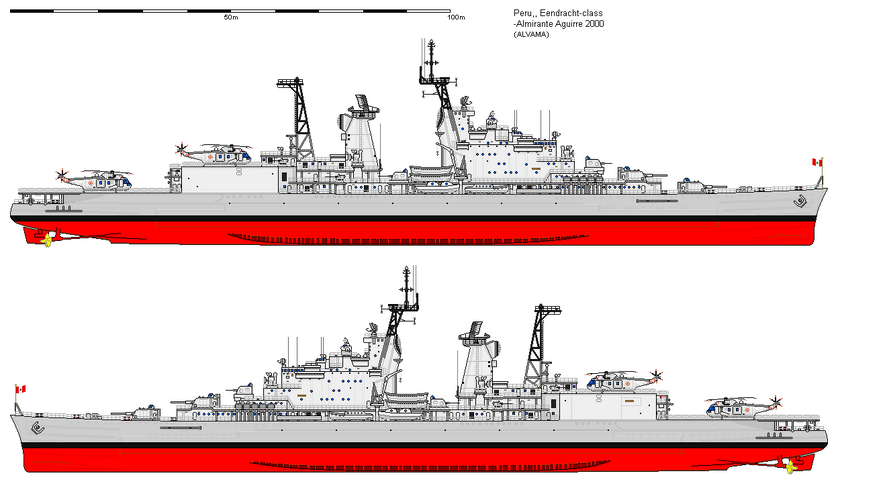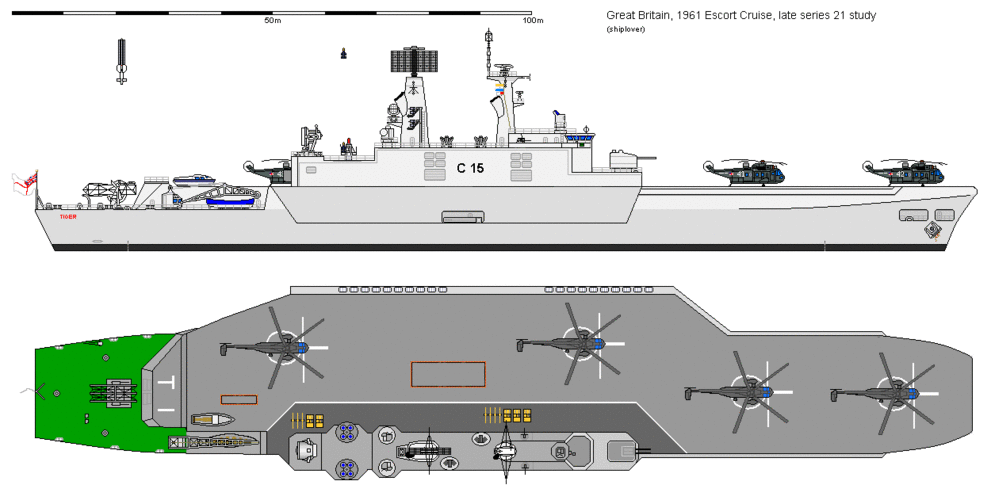Like many words, "fanciful" has shades of meaning. It can mean unrealistic, or flight of imagination (Look it up if you have any doubts). I am aware that she was designed for Mascura. Beyond budgetary issues, I would speculate that it was not installed because, yes, it was very expensive, but also technically demanding. This was a school ship training cadets in basic seamanship and other aspects of the naval profession. Given limited funds (always the case), and operating a state of the art system on a ship not primarily involved with fleet escort, why not install it on a more appropriate platform (Colbert), where it would be a primary system and given all necessary attention? I do not read or speak French. Therefore, have no source or documentation for such thoughts.
The painting, which I like, but is unrealistic as it does not include the usual pair of DRBR 51 radars, nor DRBV 20C (or equivalent long range air search radar) which would be essential for missile guidance. The blueprint you posted does show such systems.
After the end of the Cold War, the US Navy's ASW abilities atrophied to an alarming extent. Sure, helicopters were still carried, ASROC launchers and Mk 32 torpedos remained aboard, but training fell by the wayside (this is well documented). I am sure we agree that simply carrying systems does not mean being able to capably use them.
It's a complex story. The French Navy needed air defense of the fleet but was essentially split into three conflicting factions - on budget grounds
- French missiles expensive national pride... Masurca (on 2*Suffrens plus "some other ships" if possible)
- US missiles: Tartar (on T-47 destroyers)
- F-8 Crusaders (on Foch & Clem' )
Technically the three systems were
complementary BUT they conflicted on... budget, at a time when the Force de Frappe was sucking military budgets like a black hole (it cost France $10 billion dollars, half the sum the USA spent on Apollo and five time more than Concorde).

en.wikipedia.org

en.wikipedia.org
What happened was that the Masurca was seen as cumbersome and expensive, and - most importantly - the third Suffren was screwed to pay for those 42 Crusaders. This created such a vicious rift and debate amid the French Navy, legend said it went as high as President De Gaulle himself. Whose son Philippe - still alive and kicking today, aged 99 ! - had been a sailor in WWII and ended Admiral. So De Gaulle asked his son, bluntly
"Crusaders or Suffren-Masurca ? what makes more sense ?"
"Crusaders" was the answer.
And so the third Suffren was screwed, making the third Masurca system orphan - no hull for it.
Or maybe an alternative could be found ? could some existing ship, larger than a 7000 tons Suffren, take that third system ?
Choices were
- Jean Bart & Richelieu battleships: way too big and expensive, retired by 1960 as manpower hogs
- the three cruisers left since 1945-55
a) De Grasse (too old, ended as Moruroa floating nuclear command post instead)
b) Jeanne d'Arc - the initial choice
c) Colbert - why not ?
Choice was Colbert.
Bottom line: national pride mandated Masurca french missiles, reality forced Tartar and Crusaders instead. Putting a third Masurca system on Colbert was an opportunistic move by an already cash-strapped French Navy - it hasn't improved since 1973, unfortunately...
 navweaps.com
navweaps.com









